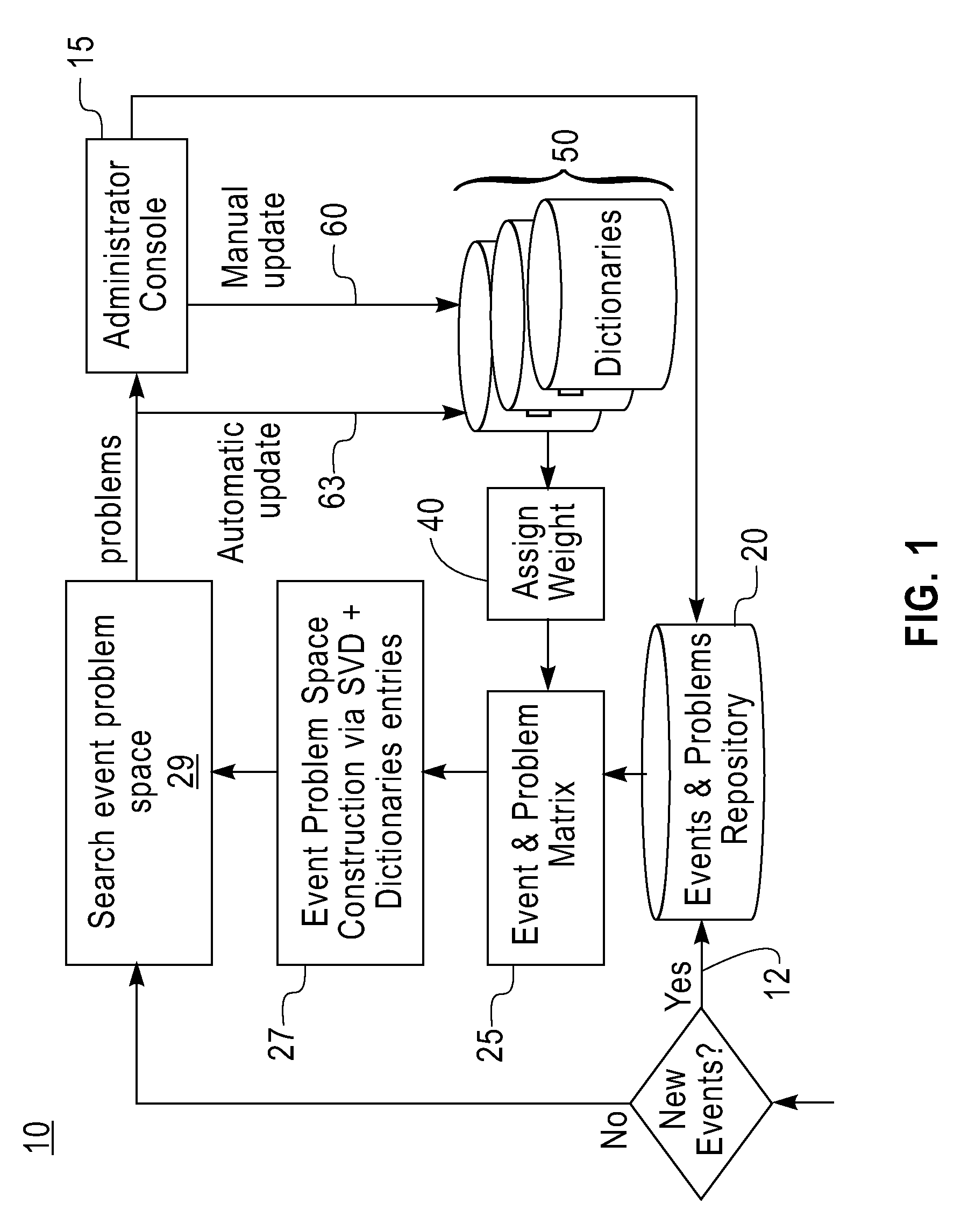Adaptive multi-levels dictionaries and singular value decomposition techniques for autonomic problem determination
a multi-level dictionary and problem determination technology, applied in the field of autonomic computing systems, can solve the problems of inability to consider the use of expert and learned knowledge to enhance search time and accuracy, and inability to adapt to new environments
- Summary
- Abstract
- Description
- Claims
- Application Information
AI Technical Summary
Benefits of technology
Problems solved by technology
Method used
Image
Examples
Embodiment Construction
[0029]The present invention is directed to a system and method for autonomous problem determination.
[0030]The problem determination system (PDS) of the present invention implements Singular Value Decomposition techniques (SVD) together with an adaptive multi-levels dictionaries system (DD) that can react to new or ambiguous error situations and predict possible problems, and adapt to new environments.
[0031]The PDS system and method enables dynamic interaction between events and the dictionaries with its entries being continuously updated to maximize correlation among the data. The concept of “occurrence index” is further implemented which is a user defined frequency and time based weighting factor assigned to each dictionary entry to reflect its relative importance.
[0032]FIG. 1 shows the overview of the PDS system 10 of the present invention. Tic PDS system 10 includes an event bus 12, an administrator console 15 for enabling user administration / interaction with the system, and, an ...
PUM
 Login to View More
Login to View More Abstract
Description
Claims
Application Information
 Login to View More
Login to View More - R&D
- Intellectual Property
- Life Sciences
- Materials
- Tech Scout
- Unparalleled Data Quality
- Higher Quality Content
- 60% Fewer Hallucinations
Browse by: Latest US Patents, China's latest patents, Technical Efficacy Thesaurus, Application Domain, Technology Topic, Popular Technical Reports.
© 2025 PatSnap. All rights reserved.Legal|Privacy policy|Modern Slavery Act Transparency Statement|Sitemap|About US| Contact US: help@patsnap.com



